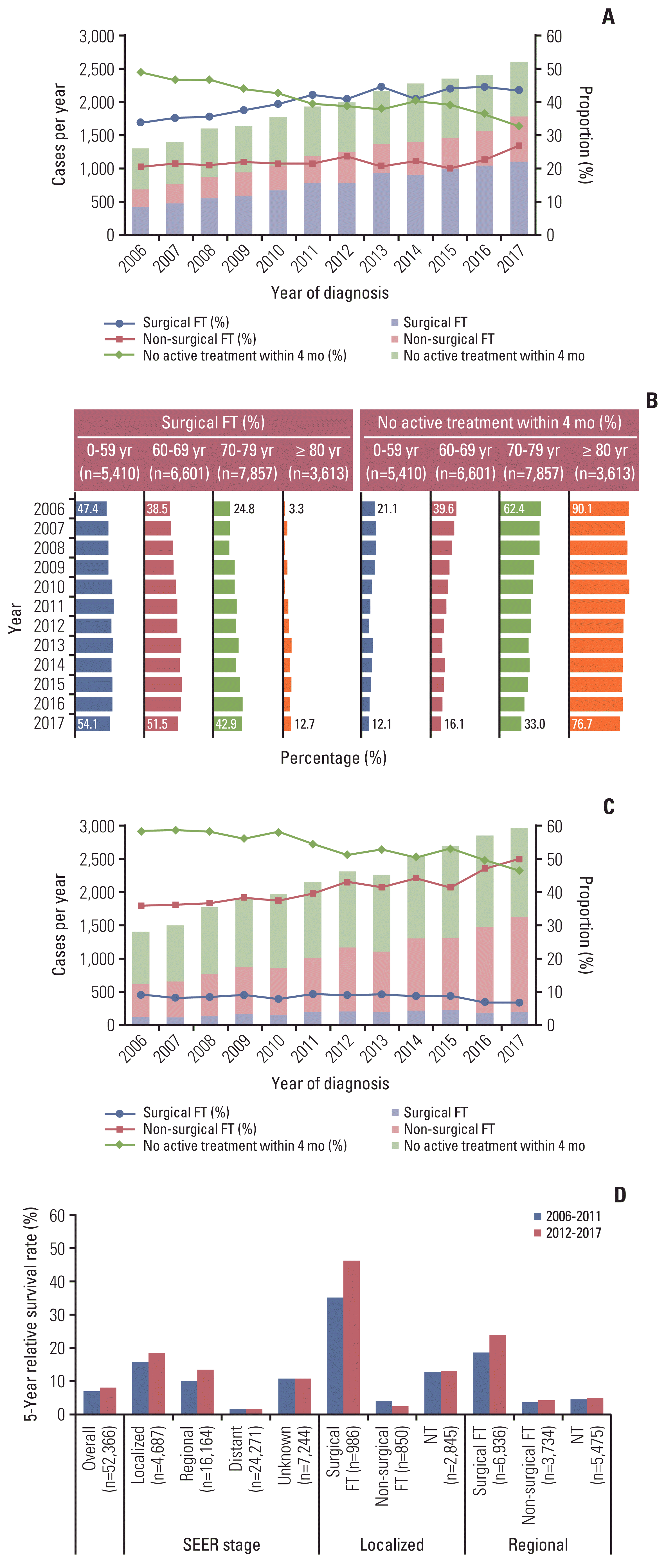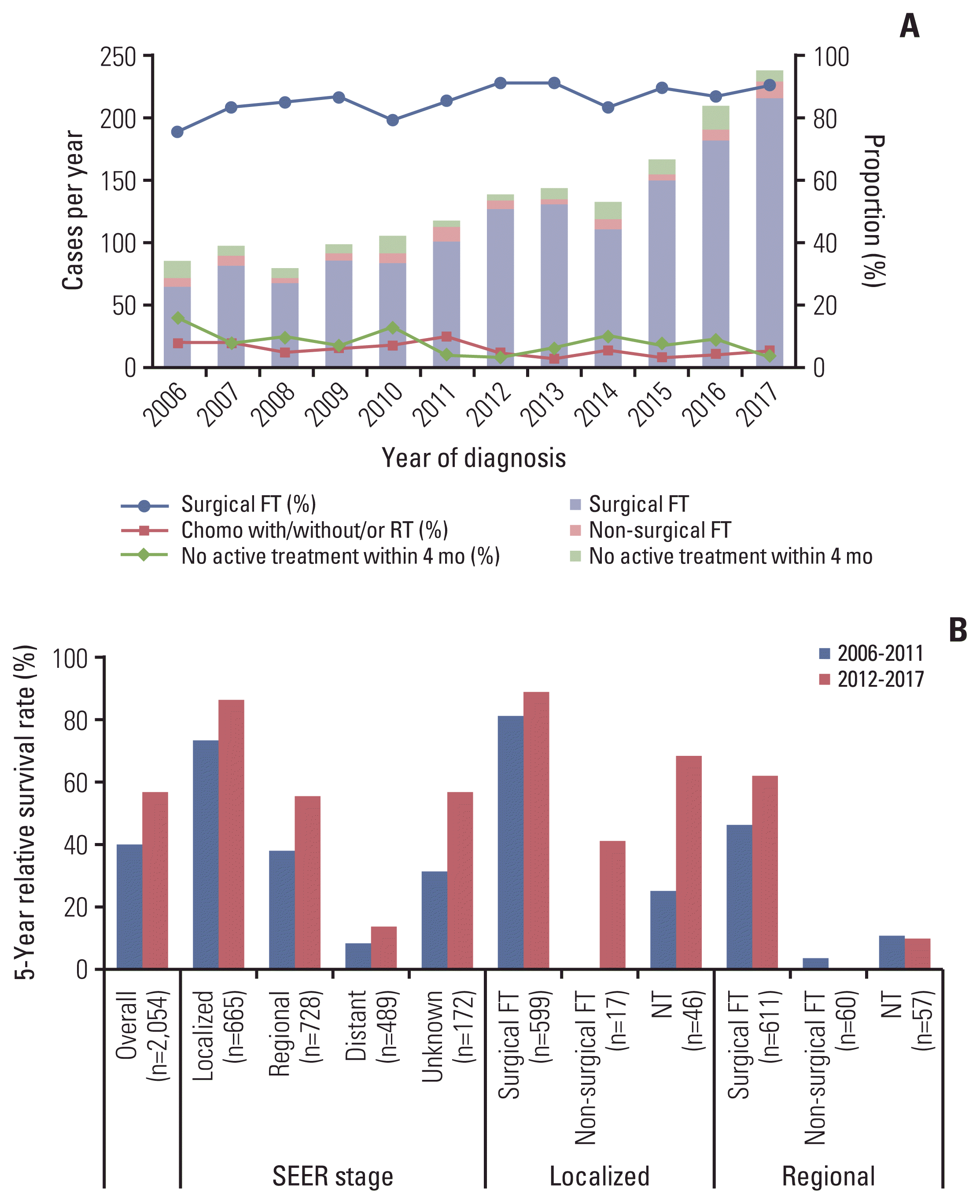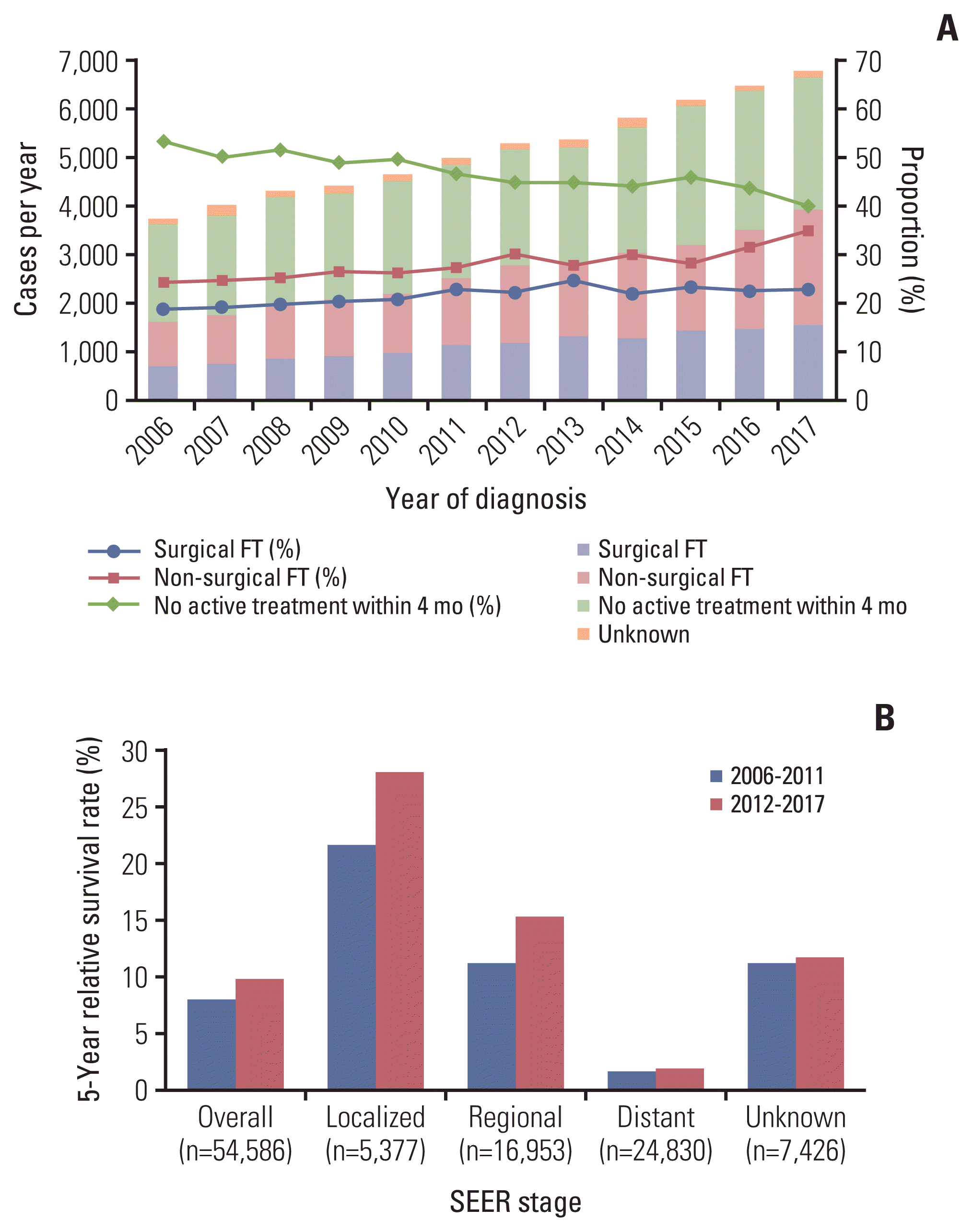3. Khorana AA, McKernin SE, Berlin J, Hong TS, Maitra A, Moravek C, et al. Potentially curable pancreatic adenocarcinoma: ASCO clinical practice guideline update. J Clin Oncol. 2019; 37:2082–8.

4. Ducreux M, Cuhna AS, Caramella C, Hollebecque A, Burtin P, Goere D, et al. Cancer of the pancreas: ESMO clinical practice guidelines for diagnosis, treatment and follow-up. Ann Oncol. 2015; 26(Suppl 5):v56–68.

5. Lutfi W, Zenati MS, Zureikat AH, Zeh HJ, Hogg ME. Health disparities impact expected treatment of pancreatic ductal adenocarcinoma nationally. Ann Surg Oncol. 2018; 25:1860–7.

6. Huang L, Jansen L, Balavarca Y, van der Geest L, Lemmens V, Van Eycken L, et al. Nonsurgical therapies for resected and unresected pancreatic cancer in Europe and USA in 2003–2014: a large international population-based study. Int J Cancer. 2018; 143:3227–39.

7. World Bank Group. Indicators: life expectancy at birth, total (years) [Internet]. Washington, DC: The World Bank Group;c2021. [cited 2021 Mar 5]. Available from:
https://data.worldbank.org/indicator
.
8. National Cancer Institute. Surveillance, Epidemiology, and End Results Program Cancer stat facts: pancreatic cancer [Internet]. Bethesda, MD: U.S. National Institutes of Health, National Cancer Institute;c2020. [cited 2021 Mar 5]. Available from:
https://seer.cancer.gov/statfacts/html/pancreas.html
.
9. Dimou F, Sineshaw H, Parmar AD, Tamirisa NP, Jemal A, Riall TS. Trends in receipt and timing of multimodality therapy in early-stage pancreatic cancer. J Gastrointest Surg. 2016; 20:93–103.

10. Hue JJ, Bingmer K, Sugumar K, Ocuin LM, Rothermel LD, Winter JM, et al. Mortality and survival among octogenarians with localized pancreatic head xancer: a national cancer database analysis. J Gastrointest Surg. 2021; 25:2582–92.
11. Kang MJ, Lim J, Han SS, Park HM, Kim SW, Won YJ, et al. Impact of changes in the topographic classification of Klatskin tumor on incidence of intra- and extrahepatic bile duct cancer: a population-based national cancer registry study. J Hepatobiliary Pancreat Sci. 2021; 28:740–50.

12. National Cancer Institute. SEER training modules [Internet]. Bethesda, MD: U.S. National Institutes of Health, National Cancer Institute;2020. [cited 2021 Mar 5]. Available from:
https://training.seer.cancer.gov/
.
13. Rawla P, Sunkara T, Gaduputi V. Epidemiology of pancreatic cancer: global trends, etiology and risk factors. World J Oncol. 2019; 10:10–27.

14. World Health Organization. World Health Organization. ICD-10: international statistical classification of diseases and related health problems. 10th revision, version for 2010. Geneva: World Health Organization;2010.
15. Man D, Wu J, Shen Z, Zhu X. Prognosis of patients with neuroendocrine tumor: a SEER database analysis. Cancer Manag Res. 2018; 10:5629–38.

16. Gordon-Dseagu VL, Devesa SS, Goggins M, Stolzenberg-Solomon R. Pancreatic cancer incidence trends: evidence from the Surveillance, Epidemiology and End Results (SEER) population-based data. Int J Epidemiol. 2018; 47:427–39.

18. Ederer F, Heise H. Instructions to IBM 650 programmers in processing survival computations. Vol. 10 Methodological note. Bethesda, MD: National Cancer Institute;1959.
20. Kasumova GG, Eskander MF, de Geus SWL, Neto MM, Tabatabaie O, Ng SC, et al. Regional variation in the treatment of pancreatic adenocarcinoma: decreasing disparities with multimodality therapy. Surgery. 2017; 162:275–84.

21. Abdel-Rahman O, Xu Y, Tang PA, Lee-Ying RM, Cheung WY. A real-world, population-based study of patterns of referral, treatment, and outcomes for advanced pancreatic cancer. Cancer Med. 2018; 7:6385–92.

22. Mavros MN, Coburn NG, Davis LE, Mahar AL, Liu Y, Beyfuss K, et al. Low rates of specialized cancer consultation and cancer-directed therapy for noncurable pancreatic adenocarcinoma: a population-based analysis. CMAJ. 2019; 191:E574–80.

23. Shin Y, Lee L. The health insurance system in Korea and its implications. World Hosp Health Serv. 1995; 31:3–9.
24. Eom BW, Jung KW, Won YJ, Kim YW. Trends and outcomes of non-compliance with treatment for gastric cancer in Korea over the 16 years from 1999 to 2015. J Gastric Cancer. 2019; 19:92–101.

25. Bilimoria KY, Bentrem DJ, Ko CY, Stewart AK, Winchester DP, Talamonti MS. National failure to operate on early stage pancreatic cancer. Ann Surg. 2007; 246:173–80.

26. Kirkegard J, Mortensen FV, Hansen CP, Mortensen MB, Sall M, Fristrup C. Waiting time to surgery and pancreatic cancer survival: a nationwide population-based cohort study. Eur J Surg Oncol. 2019; 45:1901–5.
27. van der Geest LG, Besselink MG, van Gestel YR, Busch OR, de Hingh IH, de Jong KP, et al. Pancreatic cancer surgery in elderly patients: balancing between short-term harm and long-term benefit. A population-based study in the Netherlands. Acta Oncol. 2016; 55:278–85.

28. Suzuki T, Kawai S, Ueno M, Lin Y, Kikuchi S. Treatment patterns in pancreatic cancer patients based on a hospital claims database in Japan. Jpn J Clin Oncol. 2021; 51:228–34.

29. King JC, Zenati M, Steve J, Winters SB, Bartlett DL, Zureikat AH, et al. Deviations from expected treatment of pancreatic cancer in octogenarians: analysis of patient and surgeon factors. Ann Surg Oncol. 2016; 23:4149–55.

30. Marosi C, Koller M. Challenge of cancer in the elderly. ESMO Open. 2016; 1:e000020.







 PDF
PDF Citation
Citation Print
Print



 XML Download
XML Download